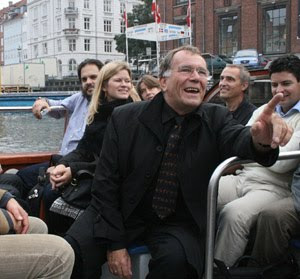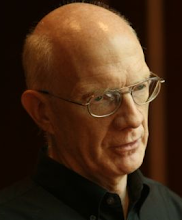 The city of Austin, Texas (my old burg) has decided to right the wrongs of the
The city of Austin, Texas (my old burg) has decided to right the wrongs of the When I was in the Austin area around Thanksgiving, I paid a visit to some friends (I will call them Mr. and Mrs. J) who live in the suburbs outside town. We had a great visit, and it was good to see them. And the suburb in which they live is beautifully planned, with linear parks and bike paths. The visit pointed out to me the distance between people who see bicycles as recreational devices and those who see them as transportation. I mean, I recognize the value of hike-and-bike trails, particularly for people who aren't ready to undertake a 10- to 20-mile commute.
While my friends and I were visiting, Mrs. J expressed to me her exasperation about the "social engineering" that the Austin City Council was undertaking in the new bike ordinance and (not knowing that I had a blog where I write about Practical Cycling) opined that bicyclists belong on the paths and not on the road. I judiciously held my tongue (and since Mr. J. was aware of the situation, there was no need to rock the boat). Mrs. J. did bring up an interesting point about the law, expressed as an objection to scofflaw cyclists (she and I are on the same page there) and asked rhetorically, "What happens if I'm stopped at a light and a cyclist comes up right next to me? Am I breaking the law?"
I thought it was a fair question, and looked up the wording of the ordinance. You can download a copy here. It's supposedly identical to the wording of the law that the Texas Legislature passed virtually unanimously and that Rick Perry vetoed (you can't fault the Austin City Council for failing to take advantage of other legislators' work.)
It's well written. It does the following:
- Defines a class of "Vulnerable Road User" ("VRUs" include cyclists);
- Directs that motorists shall vacate a lane used by a VRU if there are two or more lanes going in a direction;
- Directs that motorists shall pass the VRU at a safe distance otherwise;
- Defines "safe distance" (3 feet for a private vehicle, 6 feet for a truck or commercial vehicle);
- Directs that motorists shall yield ROW to VRUs when making left turns;
- Directs that motorists may not overtake and turn right in front of VRUs unsafely;
- Directs that motorists may not use their vehicles to threaten or intimidate a VRU;
Hm. It goes quite a bit beyond clearances, it really succinctly tries to address the major hazard facing bicyclists. Although it's concisely written, it's a straightforward, good law, and Mrs. J's concerns for "motorists' rights" (as if they needed additional ones!) are ungrounded. Good for you, Austin.






